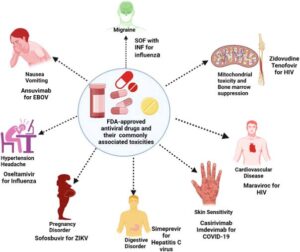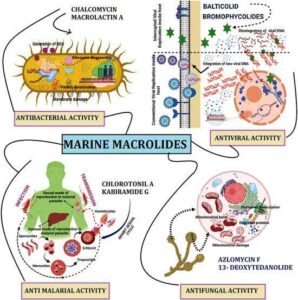Back to: MICROBIOLOGY 100 LEVEL
Welcome to class!
I’m super excited to be here with you again. You’re not just showing up—you’re growing! Your consistency is like planting good seeds that will soon bloom into a beautiful future. Today’s lesson is an exciting one because it explains how we fight off some of the trickiest invaders—viruses and fungi. Let’s get started together!
Antiviral And Antifungal Drugs
So far, we’ve talked about bacteria and antibiotics. But bacteria aren’t the only troublemakers. There are other tiny organisms that cause disease—like viruses and fungi—and they require very different types of drugs. Imagine trying to use a cutlass to fish in the river. That won’t work. The same way antibiotics don’t work on viruses or fungi—because they are built differently. That’s why we need antiviral and antifungal drugs.

Let’s look at each one clearly, with real-life examples that you may already know.
Antiviral Drugs
Viruses are even smaller than bacteria, and they can’t live or reproduce on their own. They need to enter a host cell—like a hijacker taking over a vehicle. This makes it tricky to kill them without harming our own cells too.
Antiviral drugs are specially made to stop viruses from multiplying or spreading. They don’t usually kill the virus outright. Instead, they slow it down or stop it from making copies of itself, giving your immune system the upper hand.
Examples of Common Antiviral Drugs:
Acyclovir – Used to treat herpes infections like cold sores or genital herpes.
Oseltamivir (Tamiflu) – Helps fight influenza (flu) by reducing how fast the virus spreads in the body.
Zidovudine (AZT) – One of the first drugs used to manage HIV/AIDS. It stops the virus from copying its genetic material.
Tenofovir and Lamivudine – Commonly used in Nigeria as part of HIV treatment plans. They help keep the viral load low and the immune system strong.
These drugs must be used correctly and consistently, especially for diseases like HIV, to avoid drug resistance and viral rebound.
Antifungal Drugs
Fungi are different from viruses and bacteria. They are more like our own cells, so it’s harder to make drugs that kill fungi without affecting human cells. Fungal infections can range from mild (like athlete’s foot or ringworm) to severe (like those that affect the lungs or bloodstream).
Examples of Common Antifungal Drugs:
Clotrimazole – Often used in creams to treat skin infections like ringworm or candidiasis.
Fluconazole – Treats internal fungal infections like oral or vaginal thrush.
Ketoconazole – Comes in creams and shampoos for skin and scalp infections.
Amphotericin B – A powerful drug used in hospitals for serious systemic fungal infections. It must be used with care due to side effects.
How Antiviral and Antifungal Drugs Work:
Antiviral drugs usually stop viral replication by blocking enzymes or proteins the virus needs to copy itself.

Antifungal drugs target the fungal cell wall or membrane (which is different from human cells) and disrupt its structure, causing the fungus to die.
Summary
- Antibiotics do not work against viruses or fungi; we need antivirals and antifungals.
- Antiviral drugs stop viruses from multiplying. Examples include Acyclovir (for herpes) and Zidovudine (for HIV).
- Antifungal drugs kill or inhibit fungi. Examples include Clotrimazole (for skin infections) and Fluconazole (for thrush).
- Proper use of these drugs is important to prevent resistance and ensure full recovery.
Evaluation
- Why are antiviral drugs different from antibiotics?
- Mention two common antiviral drugs and what they are used for.
- Name two antifungal drugs and the infections they treat.
You’re becoming such a strong microbiology student, and it shows. Keep going—you’re building a foundation that will take you far in life and in your career. Afrilearn is here with you every step of the way. Can’t wait to see you in the next class. Keep shining!
